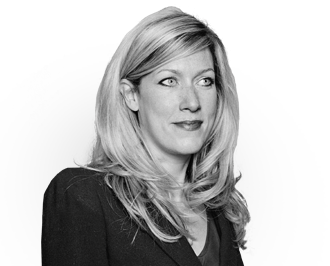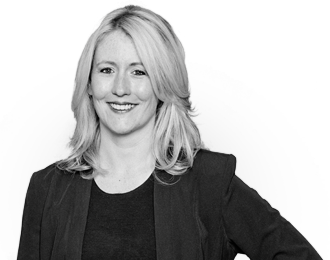Happy #IWD2020 #EachforEqual! Five sisters in law – barristers Lousia Collins, Rebecca Hill, Gemma Rose, Alexandra Wilson and Alexa Le Moine of 5SAH – share their views on life and work at the Bar, keeping/retrieving the faith, and the strength and support of a united and collective voice
Louisa Collins:

There was a point at which, during the year following my maternity leave, I wondered whether it was worth being back at all. The challenges of rebuilding a career at the Bar and paying more for childcare than the income trickling in are hard to embrace. But three years on, there is some equilibrium that has been reinstated.
Instructing solicitors have been supportive and understanding; for instance, when I have had to move conferences around due to childcare commitments. There continue to be many challenges, such as the restrictions on your time and often having to work into the night after bath and bedtime, but there are positives too. Being self-employed means that I have been able to attend school workshops, sports days and have been able to pop down to see my children during the daytime when I am working at home and they are downstairs with our nanny. These pockets of time can bring a joyful break to drafting a skeleton argument.
But there are compromises and adaptations that I have had to make to get that balance. It comes and goes. When a few cases are adjourned into an already busy period, there is a concertina effect and my sleep tends to draw the short straw. It has been vital to make sure the clerks know how much capacity I have and to learn to say no to a new brief that I cannot give my proper attention to. My clerks have been accommodating and supportive, which has helped immensely.
Perhaps one of the acknowledgements that needs to be made in helping retrieve the faith in my abilities as a barrister and mother is the women at the Bar who will beat the drum for you if you are struggling to do so. I have connected with a number of such women; there is a collective voice which often helps to bring momentum to a female issue, whether it is maternity leave, returning to work or simply coordinating meetings at a time that doesn’t always interfere with family life. There is strength in the numbers bringing those conversations to the table and the issues are no longer being so easily side-lined.
100 years have passed since women were first allowed to practise at the Bar. Now that there is an equality between the sexes of those entering the profession, the focus has shifted to retaining women, as there is a significant drop-off in the numbers at approximately 10-14 years’ call. The Bar Council has initiated a campaign, The Next 100 Years: Women at the Bar, aiming to celebrate the successes and drive forward the discussion with topics such as how to remove the obstacles faced by women at the Bar. There are mentoring schemes available through the Bar Council and external bodies to women and parents seeking to navigate the challenges they may face. The support networks are stronger than ever before and for that we can be optimistic for greater equality in the future of this profession.
Rebecca Hill:

As women barristers we are often asked how compatible our profession is with having a family. Having spent most of the last four years either pregnant or on maternity leave I feel fairly well able to posit an answer, albeit through the prism of my own area of specialism – extradition.
I commenced my first pregnancy with real trepidation. How would I cope with morning sickness and a cell visit with a particularly rowdy client? What would happen if I had a big hearing when I felt especially unwell? One undeniable challenge of the profession for a pregnant woman is that there isn’t any leeway for ‘off days’. However, I managed to muddle through the first three months. Once my pregnancy became obvious I was pleasantly surprised by the support I found from court staff, opponents and judges. In fact, I distinctly remember multiple occasions of being invited to sit whilst advancing my submissions when it really wasn’t necessary.
Both the beginning and end of parental leave are difficult because there is no obvious guidance for the self-employed on how to do it. One must work out how to claim maternity/paternity benefit (which is typically refused, initially, due to insufficient NI contributions – an unfortunate consequence of paying our NI in bi-annual lump sums – and involves a bit of negotiation with bureaucracy). One must decide what to do with the good cases which inevitably come in just as you are about to finish work and whether to suspend one’s practising certificate and insurance or not. In fact, the Bar Council have produced an exceptionally helpful Family Career Breaks Advice Pack with a lot of guidance on these points, but I was not aware of it until writing this article. I would strongly recommend anyone due to take parental leave look it up.
It is undoubtedly difficult returning to work after parental leave, especially when it might be the second or third break you have taken. Even for established practitioners (I was 12 years’ call when I took my first break) the professional landscape can change significantly in a year. Currently there is a lot of movement amongst solicitors’ firms and so you may find, as I did, that long established professional relationships end because those individuals have moved firms or departments. Obviously, whilst you were absent, others will have stepped in to take work which previously you may have expected to land in your pigeon hole (or inbox more likely!). Nonetheless, with a supportive clerking team behind you and a bit of effort, it is perfectly possible to recover one’s practice within a matter of months. In my case I had a pre-return practice meeting and devised a strategy for raising my profile. I worked collaboratively with my chambers support team to ensure solicitors were aware of my return.
To make return to practice as a parent work for you, it really is essential to be frank about your own red lines on returning to work. I was returning four days a week and would not work Fridays. Childcare commitments meant conferences would need to be carefully timed and due to my reduced capacity for working at weekends (when I have two small people hanging off my legs) papers days are essential to ensure deadlines are kept. When you have young children you suddenly become aware of how much of the marketing and networking integral to our profession takes place in the evenings, which for many parents presents a real issue. Our chambers has recently undertaken an afternoon training event for solicitors –and to improve our position women really need to drive a shift in this direction.
There is much further to go in terms of creating a situation in which women with young children feel happy and able to return to a successful career at the Bar but, from my experience, we are not in a bad position. My chambers and those of my contemporaries appear to be adopting an increasingly supportive approach to working mothers, which is much more tolerant of the adaptions needed to enable work to work. Alongside an increasingly diverse judiciary, it is to be hoped, will come an increased understanding of the conflicting demands upon practitioners who are also primary carers.
The extradition courts, at least, are surprisingly tolerant of listing to accommodate counsel’s working patterns and this approach can become more commonplace. There is reason to be optimistic that the self-employed Bar will become an increasingly welcoming place for women who wish to combine their practice with motherhood.
Gemma Rose:

I was fortunate when I started out to have supportive family, friends and teachers who firmly instilled in me that I could get to where I wanted to be. I studied at a state school, went on to read law at university and spent my holidays working away in property management to earn some money. I completed my BPTC, submitted my first lot of (ultimately unsuccessful) pupillage applications and applied for paralegal jobs.
I was lucky to obtain a paralegal position at a small criminal and family solicitors’ firm run by two female partners. I spent a year and a half learning the ropes surrounded by smart, fierce and patient solicitors, paralegals and staff members; the majority of which were female. I then got my offer of pupillage at 5 St Andrew’s Hill and so began my career at the Bar. I was one of two pupils, both female, and I was again lucky to find myself at a set where we were never pitted against each other. We were able to support one another and, with the help of those at chambers, we have started our careers in a strong position.
From where I stand at the junior end, it does appear that the Bar is moving in the right direction. Within my peer group there is far more equality in terms of gender and the work I undertake is so varied I never feel restricted as to what I can take on. However, I am aware of the struggles of gender roles in terms of practice areas. For example, the view that women are dominant in family law and not so in financial crime. Whilst my clerks and chambers have always been supportive in terms of pushing me into new avenues, it is something that does concern me as I move forward in my practice.
I know that organisations such as the Female Fraud Forum and Young Fraud Lawyers Association do great work in promoting women in male-dominated practice areas. Another organisation doing impressive work to support and applaud women is Women in Criminal Law. The launch of Women in Family Law is imminent and I’m sure this will also work in beneficial ways to advance women in the profession. I think open communication through organisations that promote and celebrate women, without excluding men, are so positive and have helped me feel more confident when approaching networking and marketing events. The fear of imposter syndrome is very much a reality, but organisations such as these are key, in my view, to building up women to put themselves forward for opportunities.
So far, I have had a positive experience in terms of being a woman at the junior end of the Bar. Much of this I put down to the work being done by others to move the profession forward. I don’t know how my views on the Bar will change as I progress in my career. I’m aware of the challenge a family could potentially bring to the job and I’m grateful to those who are trying to make changes in that area. However, I am hopeful that the Bar will continue to take steps to an equal and enabled profession, given the good work organisations are doing supporting junior members like me.
Alexandra Wilson:

As a new tenant, it is hard to begin planning your career at the Bar. My mantra was always that a long-term plan gave me a sense of direction and a sense of focus. However, the next significant step from junior barrister would be to either become a judge or to become a QC, both of which seem some time away.
I am in awe of many QCs and judges but I have always struggled to find role models at the Bar. Prior to joining this profession, I felt that there was no one that looked or sounded like me. This is perhaps not surprising when we have only recently celebrated 100 years of women at the Bar. Role models are so important.
As for many women at the Bar, Lady Hale is one of my biggest role models. Having been the first female president of the Supreme Court, she has shown that there is no ceiling for women in the law. Although the majority of her career has been in a male-dominated environment, she has not let that limit her success. She sets an extremely high bar for all of us.
Lady Hale gave the 100 Years of Women in the Law Anniversary Lecture at Girton College, Cambridge in May 2019. In this lecture, she noted that women are still underrepresented at the senior end of the profession:
‘All those able young women who go into the law should be enabled to stay in it, and not be forced out by the long hours culture in some parts of the profession. We need to find sensible, practical answers to some of the problems they face. They should be able to return if they decide to take a career break for family or other reasons. And they should have their merits and abilities recognised if they choose to step sideways, out of private practice and into some other kind of more manageable practice – in the public sector, government, local government, regulation, or in the private sector. We need to recruit good people from many different walks of legal life into the judiciary at all levels.’
As Lady Hale recognises, in order to achieve better representation at the top, in the judicial positions, we need to ensure that women stay in the profession. To an enthusiastic pupil or junior tenant, it can seem baffling that anyone would choose to leave the profession that they have worked so hard to break in to. However, having seen some of the financial challenges of being self-employed, particularly for people who want to raise a family, I understand why the Bar is struggling with retention of women. Mentors and role models are extremely important in combatting this. The more women we are able to see succeeding and taking these higher positions, the more realistic we will think it is that we too can work towards those goals.
My experience at the Bar is not only as a woman, but as a woman of colour. I hope to see racial diversity in the Supreme Court in the next few years. It is disappointing that the ten most senior judges in the country are all white, but hardly surprising with the slow rate at which the profession has embraced diversity. Dame Linda Dobbs DBE, a High Court judge for almost 10 years, is another of my role models. She was the first non-white person to be appointed the senior judiciary of England in Wales in 2004, which isn’t that long ago. I met her and had the privilege of speaking on a panel with her at an event at Middle Temple and I was blown away by the milestones she achieved at a time where diversity was unwelcomed.
There are so many inspirational women who have built the steps for us to walk on in pursuing a career at the Bar. I hope to follow in their footsteps – not only in pursuing the career of my dreams, but also in laying the foundations for others. In turn, I try to provide inspiration to women who are aspiring barristers, particularly women from non-traditional backgrounds. As I grow as a barrister, I will continue to learn from my role models and I hope to be a role model for others.
Alexa Le Moine:

Middle Temple recently held an exhibition to celebrate a centenary of women in law. Even in 1964, 45 years after the first woman was admitted to an Inn of Court, women accounted for only 4.6% of those practising at the Bar. Today, there has been a transformative wave; half of those called to the Bar are women. There are female barristers in every practice area and women have attained the highest ranks in the judiciary. To young members of the Bar, the stories of these distinguished trailblazers such as Helena Normanton KC, Dame Rose Heilbron and Lady Hale are a reminder of how far we have come and how much can still be achieved.
However, it still can be a daunting prospect joining a profession that has historically been male dominated; the struggles women have faced in coming to (and staying at) the Bar are well documented. Women compete on exactly the same terms as men, selected for pupillage and tenancy entirely on merit. Nonetheless, as a pupil I was conscious of proving myself.
The Bar provides one of the most engaging careers there is, where it is not uncommon for practitioners to often proclaim that this truly is the best job in the world. Although the Bar cannot approximate complete gender equality at every level, opportunities for women have improved and still are improving. Optimism is stirring amongst the Bar that chambers are adopting more progressive attitudes for example towards parental leave and flexible working.
Yet the pressures on the modern-day Bar are unyielding. Wellbeing is often one of the first things to be sacrificed in a profession where you are expected to (and willingly and passionately do) give it your all. This is why the work of organisations such as Women in Criminal Law that encourage, mentor, support and promote women within the profession are vital in providing an outlet to challenge the imbalance and create a forum for female barristers to share in their experiences. As a pupil, I have found this to be an invaluable tool.
Greater strides are being taken now more than ever before to create a more diverse Bar, one that is reflective of the society barristers represent. Creating a network of ‘sisters in law’ is crucial to the continuation of the endeavours of those who have preceded us, in order to keep encouraging talented female advocates to come to the Bar and enable the continuing successes of women at the Bar to be celebrated.
Lousia Collins, Rebecca Hill, Gemma Rose, Alexandra Wilson and Alexa Le Moine are barristers at 5SAH.
This article was orginally published in Counsel Magazine on 9 March 2020.



